Audiometry
Hearing audiometry is a painless, highly informative, non-invasive hearing test that measures a person's ability to hear different sounds, pitches, or frequencies.
For patients with swelling in the ear or surrounding tissues, audiometry is done to determine if hearing loss has occurred, or to check their hearing before and after surgery. Ear audiometry is also used to assess whether a hearing aid is appropriate for a patient or if surgery is needed to improve hearing.
How does a person hear?
The outer ear collects sound waves from the environment and directs them down the ear canal to the eardrum. When sound hits the eardrum, a vibration is generated that is transmitted through the tiny bones in the middle ear (hammer, incus, and stapes). The stirrup vibrates and transmits a signal to the cochlea in the inner ear. The cochlea is a coiled tube filled with fluid and lined with microscopic hair cells. When the vibration reaches the cochlea, it makes the fluid and then the hair cells move. The movement of hair cells generates nerve signals that our brain perceives as sound.
What sound can a person hear?
The pure tone ear audiometry test measures the quietest or least audible sound a person can hear. During the test, the patient will wear headphones and hear a series of sounds.
Sound volume is measured in decibels (dB):
- whisper - about 20 dB;
- loud music - 80–120 dB;
- jet engine - about 180 dB.
The sound tone is measured in frequencies (Hz):
- low-frequency range 50-60 Hz;
- the high-frequency range of 10,000 Hz or higher.
The normal range we hear is 250-8000 Hz at 25 dB or below.
When can a patient lose hearing?
- acoustic trauma;
- persistent ear infections;
- head injury;
- genetic predisposition (hereditary conditions);
- diseases of the inner ear;
- side effects from medications;
- professional deafness;
- rupture of the tympanic membrane.
When is audiometry indicated?
- hearing loss;
- intermittent or persistent tinnitus;
- audiometry once a year, when working in a noisy enterprise;
- when choosing a hearing aid;
- after suffering inflammatory diseases of the middle and inner ear;
- after taking toxic drugs that affect hearing;
- damage to the auditory nerve;
- acubarotrauma or mechanical trauma to the ears;
- damage to bone structures or their consequences in the temporal bone region;
- chronic diseases of the hearing organs;
- hearing loss of unknown etiology.
Hearing audiometry is also carried out by specialists from the Dobrobut clinics to assess the effectiveness of treatment, to select a treatment regimen for ear diseases.
What allows you to investigate the conduct of audiometry?
Hearing audiometry can determine if a patient has sensorineural hearing loss (damage to a nerve or cochlea) or conductive hearing loss (damage to the eardrum or tiny bones).
What is Speech Hearing Audiometry?
A word recognition test (also called a speech recognition test) measures a person's ability to understand speech from background noise. If you have poor speech recognition, speech may sound distorted.
The results of the study are recorded on a special graph, which is displayed as a percentage, which shows the degree of speech intelligibility.
What is computer audiometry of hearing?
The modern equipment of our clinic allows us to accurately determine the level of hearing loss, or whether there is any hearing loss in the patient at all. Computer audiometry is carried out using special headphones through which sound is reproduced and a high-precision recording device.
How to prepare for audiometry?
No special preparation for audiometry is required. During the test, try to not move and still be as quiet as possible to obtain the most reliable audiometry results.
How is ear audiometry performed?
Audiometry is performed for 20-30 minutes. The study is carried out in a special soundproofing room. Our specialists give sound signals using special equipment. The patient should indicate using buttons or gestures whether he hears sounds of different frequencies and intensity. The results are displayed as a graph with red and blue curves.
Such a study is highly informative, effective, and has no contraindications.
How is the interpretation of the results carried out?
Pure tone audiometry reflects the level of audibility of different tone frequencies in both ears. On the audiogram graph, red lines indicate results for the right ear and blue for the left ear.
Hearing loss is described by our specialists as follows:
- normal hearing = less than 25 dB;
- light = 25-40 dB;
- moderate = 41-65 dB;
- heavy = 66-90 dB;
- deep = more than 90 dB.
How to get the research results in the Dobrobut MC?
The ENT (audiologist), after hearing audiometry, will discuss the results of the examination with the patient. He hands out the conclusion and the schedule, and sends, if necessary, to the attending physician, who can be a neurosurgeon, otolaryngologist, or therapist. They will discuss the results of the audiogram with the patient and suggest treatment options if needed.
How to sign up for a study at Dobrobut MC?
MC "Dobrobut" uses the most modern and high-class equipment for hearing audiometry in Kyiv to obtain high-quality and highly informative results.
You can find out the details of the procedure, the cost of the examination, and the cost of audiometry at the Dobrobut Medical Center in Kyiv, as well as sign up for a consultation with a doctor by filling out the feedback form on our website, or by calling the call center number.
Bibliography
- Amundsen GA. Audiometry. In: Fowler GC, ed. Pfenninger and Fowler's Procedures for Primary Care. 4th ed. Philadelphia, PA: Elsevier; 2020:chap 59.
- Kileny PR, Zwolan TA, Slager HK. Diagnostic audiology and electrophysiologic assessment of hearing. In: Flint PW, Francis HW, Haughey BH, et al, eds. Cummings Otolaryngology: Head and Neck Surgery. 7th ed. Philadelphia, PA: Elsevier; 2021:chap 134.
- Linda Rosenstock et al. Criteria for a Recommended Standard. Occupational Noise Exposure. (Revised Criteria). — NIOSH. — Cincinnati, Ohio: National Institute for Occupational Safety and Health, 1998. — 123 p. — (DHHS (NIOSH) Publication No 98-126).
- Lew HL, Tanaka C, Hirohata E, Goodrich GL. Auditory, vestibular, and visual impairments. In: Cifu DX, ed. Braddom's Physical Medicine & Rehabilitation. 5th ed. Philadelphia, PA: Elsevier; 2016:chap 50.
Our advantages
Our services
We are located at
ISO certificates
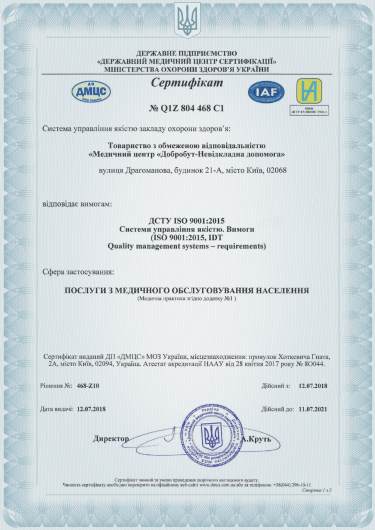
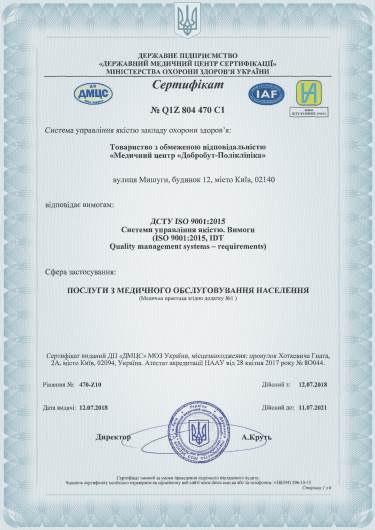
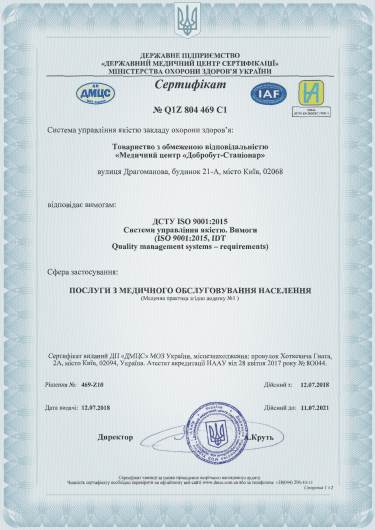
Accreditation certificates
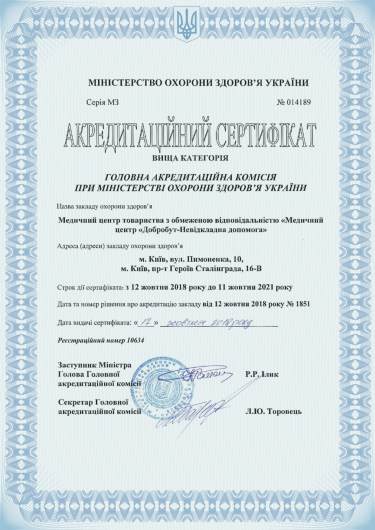
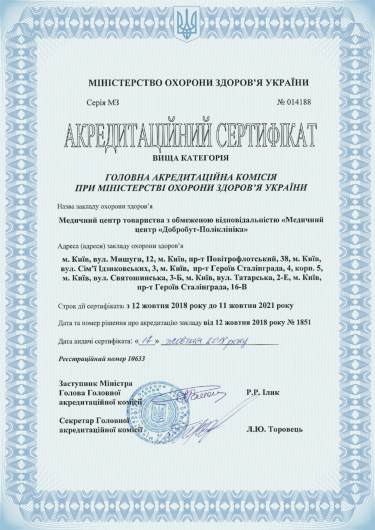

Medical practice licenses
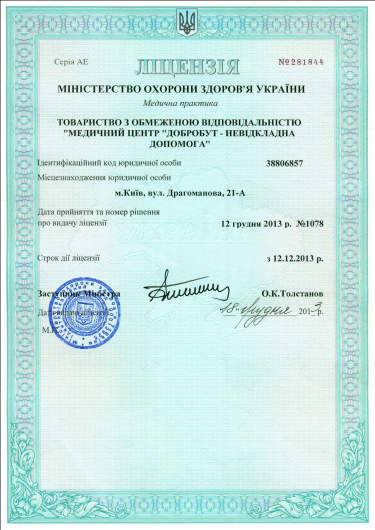
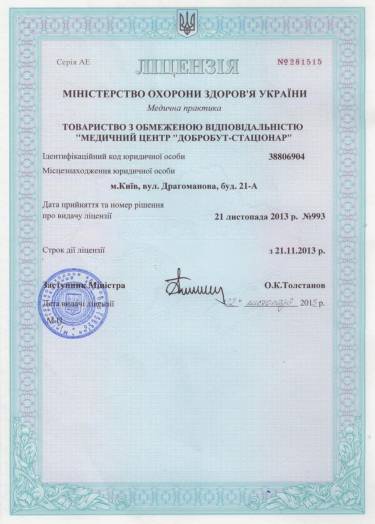








@2x.png)
@2x.png)
%402x.png)
%402x.png)
